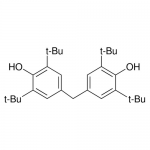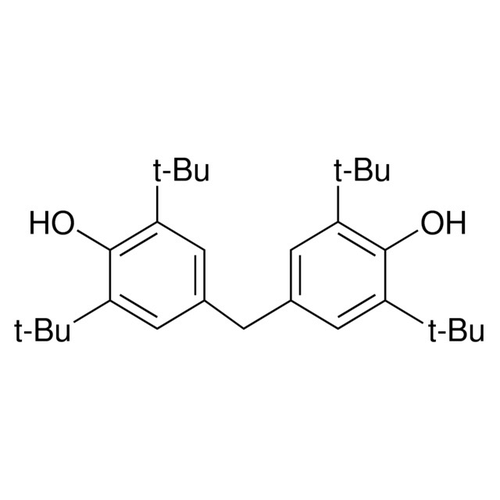| Product Name | bis-BHT |
| Description |
Phenolic antioxidant |
| Purity | >98% |
| CAS No. | 118-82-1 |
| Molecular Formula | C29H44O2 |
| Molecular Weight | 424.7 |
| Field of Use | Not for use in humans. Not for use in diagnostics or therapeutics. For in vitro research use only. |
Properties
| Storage Temperature | -20ºC |
| Shipping Temperature | Shipped Ambient |
| Product Type | Antioxidant |
| Solubility | Soluble in DMSO (25 mg/ml) |
| Source | Synthetic |
| Appearance | White Solid |
| SMILES | CC(C)(C)C1=CC(=CC(=C1O)C(C)(C)C)CC2=CC(=C(C(=C2)C(C)(C)C)O)C(C)(C)C |
| InChI | InChI=1S/C29H44O2/c1-26(2,3)20-14-18(15-21(24(20)30)27(4,5)6)13-19-16-22(28(7,8)9)25(31)23(17-19)29(10,11)12/h14-17,30 |
| InChIKey | MDWVSAYEQPLWMX-UHFFFAOYSA-N |
| Safety Phrases |
Classification: Harmful. May be harmful if inhaled, swallowed or absorbed through skin. Safety Phrases: S22 - Do not breathe dust S36/37/39 - Wear suitable protective clothing, gloves and eye/face protection S45- In case of accident or if you feel unwell, seek medical advice immediately (show the label where possible) Hazard Phrases: H315-H319-H335 Precautionary Phrases: P261-P305 + P351 + P338 |
| Cite This Product | bis-BHT (StressMarq Biosciences Inc., Victoria BC CANADA, Catalog # SIH-154) |
Biological Description
| Alternative Names | 4,4'-Methylenebis[2,6-bis(2-methyl-2-propanyl)phenol] |
| Research Areas | Cancer, Oxidative Stress |
| Scientific Background | bis-BHT is a phenolic antioxidant compound known for its ability to neutralize free radicals and inhibit lipid peroxidation. Although primarily used in industrial and food preservation contexts, its antioxidant properties have implications for neurodegenerative disease research. Oxidative stress is a hallmark of many neurological disorders, and compounds like bis-BHT may offer neuroprotection by stabilizing cellular membranes and reducing oxidative damage. Further investigation is needed to evaluate its efficacy and safety in neural systems. |
| References | 1. Takahashi O, Hiraga K.. (1981) Toxicol Lett. 8(1-2): 77-86. |



Reviews
There are no reviews yet.